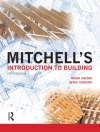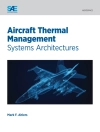The Joint Contracts Tribunal issued a new Design and Build Form in 2005, a successor to the JCT Standard Form of Building Contract with Contractor’s Design. It looks substantially different from its predecessor and it is different in structure and often in its wording.
This major new edition of David Chappell’s well regarded book has been substantially revised to take account of the new contract terms and different structure. It also considers the standard novation agreements from the CIC and City of London Law Society and more then 70 additional cases.
It discusses areas where problems frequently arise:
-
the allocation of design responsibility
-
discrepancies
-
the role of the employer’s agent
-
payment provisions
-
the approval of drawings
Table of Content
Preface.
1. INTRODUCTION.
1.1 Definitions.
1.2 Advantages and disadvantages.
1.3 The architect’s role.
1.4 Standard forms available.
1.5 Tendering procedures.
2. CONTRACT DOCUMENTS.
2.1 The documents.
2.2 Completing the form.
2.3 Employer’s Requirements.
2.4 Contractor’s proposals.
2.5 Contract sum analysis.
2.6 Supplementary provisions.
2.7 Priority, discrepancies, errors.
2.8 Custody and copies.
2.9 Notices.
3. DESIGN LIABILITY.
3.1 General principles of design liability.
3.2 Liability under the contract.
3.3 Design liability optional arrangements and consequences.
3.4 Consultant switch and novation.
3.5 Novation agreements.
3.6 In house or sub let.
3.7 Consultant warranties.
4. THE CONTRACTOR’S OBLIGATIONS.
4.1 Express and implied terms.
4.2 Implied terms.
4.3 Express terms.
4.4 Other obligations.
5. THE EMPLOYER’S POWERS AND DUTIES.
5.1 Employer’s agent.
5.2 Express and implied terms.
5.3 Instructions.
5.4 Powers.
5.5 Employer’s duties.
6. SUB CONTRACTORS AND SUPPLIERS.
6.1 General.
6.2 Sub contractors.
6.3 Statutory requirements.
6.4 The Construction (Design and Management) Regulations 2007.
6.5 Work not forming part of the contract.
6.6 Third party rights and collateral warranties.
7. POSSESSION, PRACTICAL COMPLETION AND RECTIFICATION.
7.1 Possession and deferment.
7.2 Progress.
7.3 Practical completion.
7.4 Partial possession.
7.5 Defects liability period.
8. EXTENSION OF TIME.
8.1 Principles.
8.2 Contract procedure.
8.3 Relevant events.
8.4 Liquidated damages.
9. FINANCIAL CLAIMS.
9.1 Types of claim.
9.2 Application for direct loss and/or expense.
9.3 Supplementary provision procedures (S7).
9.4 Grounds for direct loss and/or expense.
9.5 Antiquities.
10. PAYMENT.
10.1 The contract sum.
10.2 Interim payments.
10.3 Applications.
10.4 Employer’s right to withhold payment or to deduct.
10.5 Retention.
10.6 Final payment.
10.7 Advance payment.
10.8 Changes.
10.9 Valuation of changes under the supplementary provisions.
10.10 Fluctuations.
10.11 VAT.
11. INSURANCE AND INDEMNITIES.
11.1 Injury to persons and property.
11.2 Employer’s liability.
11.3 Insurance of the Works.
11.4 Insurance of the Works: new building.
11.5 Insurance of the Works: existing building.
11.6 Terrorism cover.
11.7 The Joint Fire Code.
11.8 Professional indemnity insurance.
12. TERMINATION.
12.1 Common law position.
12.2 Termination generally.
12.3 Termination by the employer.
12.4 Termination by the contractor.
12.5 Termination by either party.
13. DISPUTE RESOLUTION .
13.1 Introduction.
13.2 Adjudication.
13.3 Arbitration.
13.4 Litigation.
Table of cases.
Clause index.
Subject index.
About the author
David Chappell BA(Hons Arch), MA(Arch), MA(Law), Ph D, RIBA has worked as an architect in the public and private sectors and is currently the Director of David Chappell Consultancy Ltd. He frequently acts as an adjudicator and is author of ten books on construction law for Blackwell Publishing.












